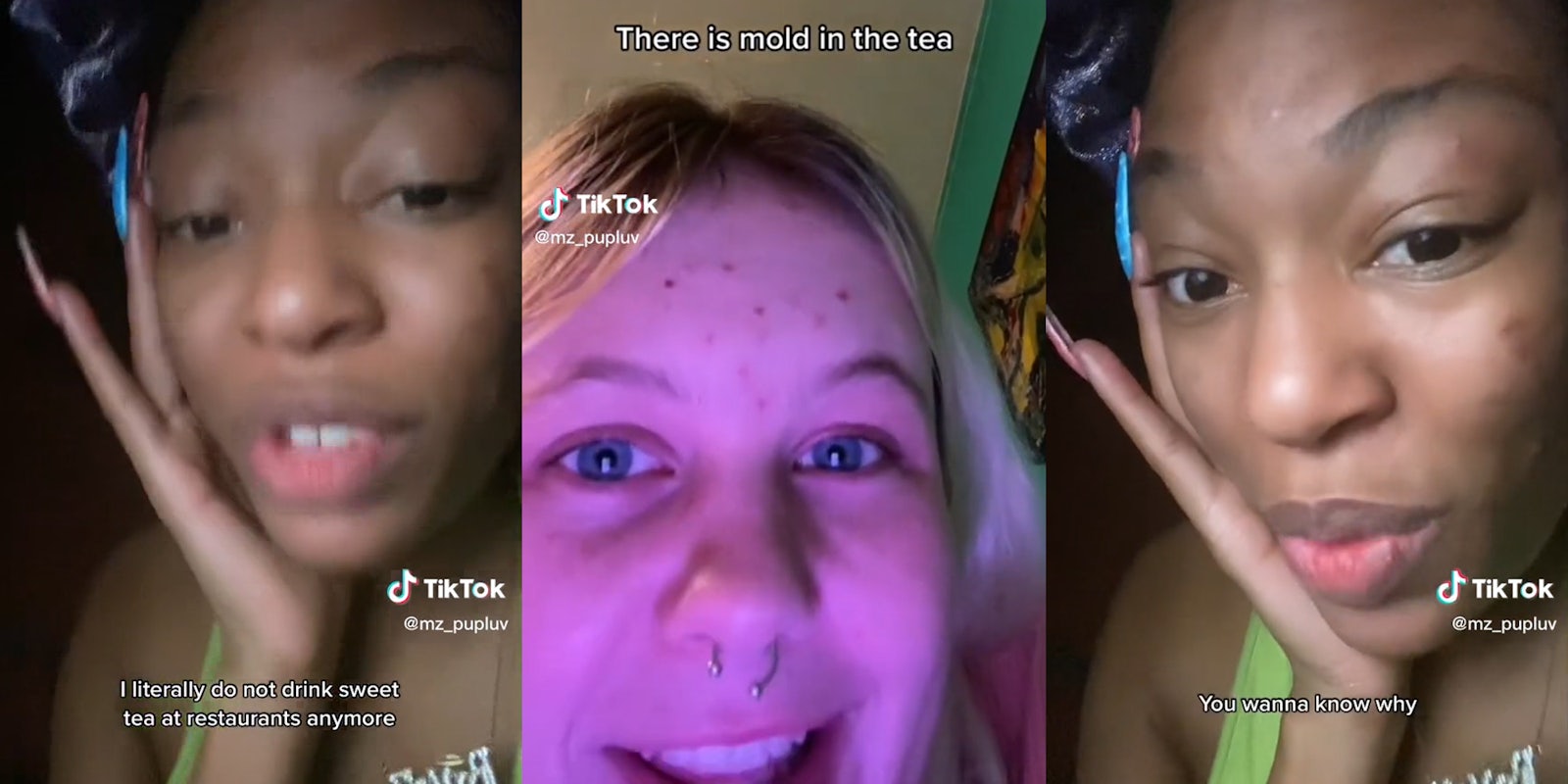TikTok really is a goldmine of alarming insider revelations from food service workers. The latest one involves sweet tea—and why some say it may not always be safe to drink.
This warning arrived in two parts: One TikTok from a regular tea drinker and one from a restaurant worker, both explaining the likelihood of mold appearing in restaurant sweet tea.
TikToker Aiden (@aidsxr) went viral to the tune of 3.2 million views last week, delivering a simple message “as a professional sweet tea drinker.” She warns that if you order tea from a restaurant and “it tastes maybe a little bit off” and you feel sick, “maybe you get a slight headache, and afterward the thought of drinking more tea makes you sick, there is mold in the tea.”
@aidsxr Youll be fine though dw. This only works if youre not too empty/full when drinking the tea. Trust ur gut
♬ original sound – Aiden
The response to this TikTok was far from reassuring, with fast food workers and tea customers sharing their own stories of serving and/or drinking moldy tea.
“As a past fast food employee i can confirm that tea often molded and we never realized till after we served customers,” wrote one user.
Another commenter wrote, “Y’all as a former McDonald’s employee yall don’t wanna know what I’ve seen.”
“I am convinced I have consumed so much mold on accident at this point it’s not even funny,” a third added, with Aiden responding, “It’s a curse for me I swear it’s 1 out of every 10 meals is contaminated.”
Thankfully several other people chimed in to say their restaurants or cafes regularly washed the tea urns, although moldy tea still appears to be a widespread problem. In a stitch with Aiden’s original video, TikToker @mz_pupluv shared a bit more insight into the mold situation, based on her experiences in the restaurant industry.
@mz_pupluv #stitch with @aidsxr the real question though is why do these #tea urns cost $100?!?!?! But yes, this stuff is covered in, i assume, a lot of training for #restaurant. Just wanna tell ya that eating out in general can be risky no matter where you are. On the brightside, your immune system is poppin’ I guarantee it #do #not #judge #my #insomnia #brain #or #afterdark #thingsithinkabout #it #is #currently #2 #am #and #i #have #nothing #better #todo ♬ original sound – mz_pupluv
“I literally do not drink sweet tea at restaurants anymore,” the TikToker claims, sharing a photo of some tea urns and explaining why they’re so easily contaminated. “If you see that and there isn’t a black cover over it, don’t drink it.”
Similarly, if customers come in during the evening and the urn is full of day-old tea, she advises that they don’t drink it. And if your tea tastes bad from the urn in the morning, “they didn’t dump it from the night before,” she alleges.
@mz_pupluv also highlighted the urn’s black plastic spout as “the most disgusting thing I can think of” and a “breeding ground” for mold. While they’re meant to be cleaned daily, the TikToker says that in many cases, they’re not.
In the comment section, several viewers expressed relief that their own workplaces had strict urn-cleaning rules, namechecking a few brands like Starbucks, Lee’s Famous Chicken, Subway, and Sonic.
“I can say our sonic made us scrub all four of them for a hour after close they would take them all apart and inspect them,” revealed one commenter, although some others shared horror stories about dirty tea urns.
The moldy tea phenomenon is one of those food service issues that draws a stark divide between workers and customers. Most tea drinkers probably aren’t aware of the danger. But if you’ve worked somewhere with a tea urn, you’re probably familiar with the problem—either because you’ve seen a lot of mold or because your workplace made you spend hours scrubbing the tea urns after closing.
The Daily Dot has reached out to both Aiden and @mv_pupluv via TikTok comment.
Update 1:31pm CT January 11: In a DM exchange with the Daily Dot, @mv_pupluv noted that this doesn’t apply to all restaurants that sell sweet tea.
“There are places that clean everything, but statistically that also means there are places that don’t (At least properly),” she said.



